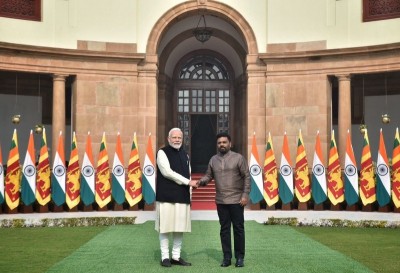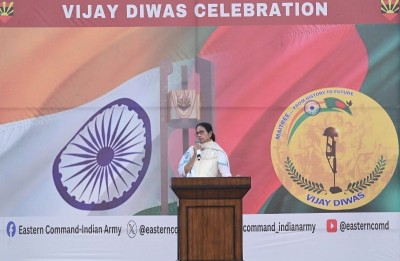
Northeast: Widening Tranquility
More importantly, the 62 civilian fatalities registered in 2015 are the lowest in the region since 1992, according to the South Asia Terrorism Portal (SATP) database [SATP data for the region is available only since 1992]. The previous lowest was 77 recorded in 2010. Notably, at the peak of the multiple insurgencies in the region, 946 civilian fatalities were recorded in 2000.
The region comprises eight states: Arunachal Pradesh, Assam, Manipur, Meghalaya, Mizoram, Nagaland, Sikkim, and Tripura. Barring Sikkim which has had no insurgency in its history, all others have seen enduring movements of armed violence, though their intensity and dispersal have varied across these States and across time. Significantly, while civilian fatalities were recorded across all seven States through 2014, 2015 saw no such fatalities in two States - Tripura and Mizoram. Among the States from where fatalities were reported in 2015, except Nagaland which registered a marginal increase, from 11 in 2014 to 14, all the other States registered a fall in civilian fatalities. Assam recorded the largest dip, with just 10 such fatalities in 2015, as against 184 in 2014.
Overall fatalities in the region also declined from 465 [245 civilians, 23 Security Forces (SFs) personnel, 197 militants] in 2014, to 273 [62 civilians, 49 SFs personnel, 162 militants] in 2015, a drop of 41.29 per cent. At the peak of the insurgencies, the region recorded 1,696 fatalities in 2000. So far in 2016 (data till April 3), the Northeast has recorded 39 fatalities (10 civilians and 29 militants).
The number of districts from where fatalities were reported in 2015 stood at 40, as against 47 in 2014. The seven troubled States of the Northeast (excluding Sikkim) have a total of 87 Districts.
Other parameters of violence also witnessed improvements. As against 31 major incidents (involving three or more fatalities) resulting in 229 deaths in 2014, there were 16 such incidents resulting in 82 deaths in 2015. The number of explosions and resultant fatalities also recorded a decline, from 102 incidents and 24 killed in 2014, to 74 incidents and 11 killed in 2015.
SF operations yielded a kill ratio of 1:2.16 against militants in 2015, significantly worse than 2014, when it stood at 1:7.65. As operations intensified, the militants have pushed back against the SFs in 2015. In 2016, thus far (data till April 3), SFs have eliminated 29 militants without suffering a single loss, suggesting that the adverse trend in 2015 has been reversed. [SFs had killed 176 militants out of 197 killed in 2014; while 21 were killed in factional clashes. Similarly, out of 162 militants killed in 2015, 56 were killed in factional clashes while SFs eliminated 106].
Nevertheless, numerous challenges remain before lasting peace can be established in this troubled region, which has witnessed cyclic surges and recessions in levels of violence over decades. Never since 1992 have overall fatalities registered decline, on year on year basis, for more than three consecutive years. This positive trend was achieved twice - between 2004 and 2006; and between 2009 and 2011. Fatalities then increased for five consecutive years between 1993 and 1997, the longest span of continuous increase in fatalities.
The region remains home to 13 of the 39 terrorist formations banned by the Union Ministry of Home Affairs (UMHA) as on March 30, 2015. According to the SATP database, apart from these 13 major terror outfits, 30 other groups remain active in the region. In addition, 23 terror groups/conglomerates are presently in peace talks or have signed ceasefire agreements with respective State and the Union Governments. In the meantime, on March 21, 2016, Union Home Minister (UHM) Rajnath Singh reiterated, "We are ready for talks with anyone who gives up violence. I appeal to everyone to shun violence."
Significantly, a 'historic accord' was signed between the Government of India (GoI) and the largest rebel Naga group, the National Socialist Council of Nagaland-Isak Muivah (NSCN-IM) on August 3, 2015. While few details of the actual contents of the agreement are available, the Centre's principal interlocutor R.N. Ravi had then clarified that the 'accord' was, in fact, a "framework agreement" that spelled out the terms of a "final settlement". Though subsequent reports suggested that such a final settlement would be worked out within three months, more than seven months have passed and no timeframe has yet been scheduled. However, NSCN-IM and GoI decided on January 20, 2016, to speed up the peace process by holding 'formal talks' twice a week.
There have, however, been instances in the past when terror outfits in the region have abrogated ceasefire agreements and rejoined militancy. Most recently, the National Socialist Council of Nagaland-Khaplang (NSCN-K) on March 27, 2015, unilaterally abrogated a ceasefire that had endured since April 2001. Subsequently, the Union Government also called off its agreement with NSCN-K through a statement released on April 28, 2015. NSCN-K had signed the ceasefire agreement with the Central Government on April 28, 2001, and this had since been extended annually. Since abrogating the ceasefire, the NSCN-K has been confirmed to have been involved in the killing of seven civilians and nine SF personnel in Nagaland.
It is noteworthy that after being successfully targeted by the SFs in a protracted campaign, most of the major terror outfits operating in the region have moved their leadership to neighboring countries like Bangladesh, Bhutan, China and Myanmar. They operate out of 'safe havens' in these countries, from where they have established training camps, and from where they help their cadres smuggle arms and ammunition, and mount attacks on Indian soil. Though the Indian Government has been able to get vital support from countries like Bangladesh, Bhutan and Myanmarfrom time to time, helping reduce the menace, several training camps still exist in these countries and these remain a worry. Not surprisingly, on March 21, 2016, UHM Rajnath Singh asserted, "We are trying to ensure border security through all possible means and to curb cross-border terrorism in the region. We (the Central Government) will discuss with Chief Ministers of the northeastern States to check the smuggling of arms from across the international border and to other States in the country. Whatever assistance is required from the Central Government would be provided to all the State Governments."
Significantly, Mukul Sangma, Chief Minister of Meghalaya, one of the States in the region, expressing concern on the easy availability of arms had noted, on March 11, 2016, "There are pockets in the region (Northeast) where arms are easily available. There are too many guns available at throwaway prices."
Moreover, facing the heat from SFs, the militants in the region have come together in an attempt to form a united platform. On April 17, 2015, NSCN-K joined hands with three of the most active terror outfits in the Northeast: the United Liberation Front of Asom-Independent (ULFA-I); IK Songbijit faction of the National Democratic Front of Bodoland (NDFB-IKS); and Kamtapur Liberation Organisation (KLO), to form the United National Liberation Front of Western South East Asia (UNLFWESEA). The UNLFWESEA headed by S.S. Khaplang was formed with the aim to set up a 'northeast government-in-exile', reportedly to be based in Myanmar. The CorCom [Coordination Committee], a conglomerate of six Manipur Valley-based militant outfits - the Kangleipak Communist Party (KCP), Kanglei Yawol Kanna Lup (KYKL), People's Revolutionary Party of Kangleipak (PREPAK), its Progressive faction (PREPAK-Pro), Revolutionary People's Front (RPF, the political wing of the People's Liberation Army- PLA), and United National Liberation Front (UNLF) - have also reportedly extended 'moral support' to the Front and agreed to take part in joint operations against 'common enemies'. CorCom was formed in July 2011 with seven members but, in a Press Release issued on February 1, 2013, stated that it has expelled the United Peoples Party of Kangleipak (UPPK) from its membership.
According to a March 23, 2016, report, the Assam Police disclosed, through a Press Statement, "On March 8, a group of UNLFWSEA [UNLFWESEA] and some other extremist organisations entered Upper Dihing Reserve Forest, Tinsukia. The group was a conglomerate of ULFA (I), PLA [Peoples' Liberation Army], KYKL [Kanglei Yawol Kanna Lup], NSCN (K)." Their initial target was to attack SFs in Upper Assam on March 16, 2016, ULFA's 'Raising Day'.
UMHA has also expressed concern over the Communist Party of India-Maoist's (CPI-Maoist) attempts to expand their base in the region. UHM Rajnath Singh, on March 22, 2016, thus observed, while addressing Assam Rifles troopers on their 181stRaising Day celebrations in Meghalaya, "We have got information that in some parts of the Northeast, Maoists are trying expand their roots. We have to check this, and I believe you can demoralise their courage (sic)." Interestingly, none of the 87 Districts of the seven insurgency affected States in the region feature in the list of 106 districts declared Maoist-affected by the UMHA as of March 1, 2016. In the last such detailed list which was released in 2012, thirteen Districts across three States in the Northeast (Assam-10, Tripura-2, and Arunachal Pradesh 1) were listed as Maoist-affected. 182 districts (including the 13 in the Northeast) had been declared Maoist-affected in the2012 list.
Meanwhile, residual State specific threats persist in all the seven affected States:Arunachal Pradesh, Assam, Manipur, Meghalaya, Mizoram, Nagaland andTripura. For instance, the issue of the Inner Line Permit (ILP) continued to trouble Manipur through 2015, with 10 people killed in the related stir. Manipur was the worst affected State in the region in terms of insurgency related fatalities through 2015, accounting for 94 deaths.
SFs have helped attain relative peace in the region and are expected to tackle the residual challenges as well. However, for an enduring peace to be established in the region, it is imperative for the Central Government to work in unison with the respective State Governments to accelerate developmental projects in the region to narrow down the economic disparity which has emerged because of years of neglect on the part of successive regimes. On March 3, 2016, Union Minister for Development of the North Eastern Region (DoNER) Jitendra Singh disclosed, "The budgetary allocation for the Ministry of DoNER has been increased from Rs 2,334.50 crore last year to Rs 2,400 crore this year. A budget of Rs 33,097.02 crore has been allocated for the Northeast across 56 ministries, which is 14 per cent higher than the budget estimate of Rs 29,087.93 crore for the previous year."
Fund allocation, however, is only a very small part of the problem. Despite generous Central allocations, States in the region have - with the exception of Tripura - been non-performers, and their administrations deeply eroded by corruption, neglect and politicization.
Support Our Journalism
We cannot do without you.. your contribution supports unbiased journalism
IBNS is not driven by any ism- not wokeism, not racism, not skewed secularism, not hyper right-wing or left liberal ideals, nor by any hardline religious beliefs or hyper nationalism. We want to serve you good old objective news, as they are. We do not judge or preach. We let people decide for themselves. We only try to present factual and well-sourced news.







